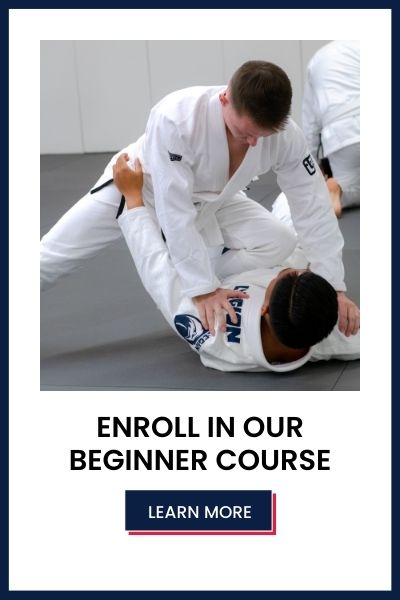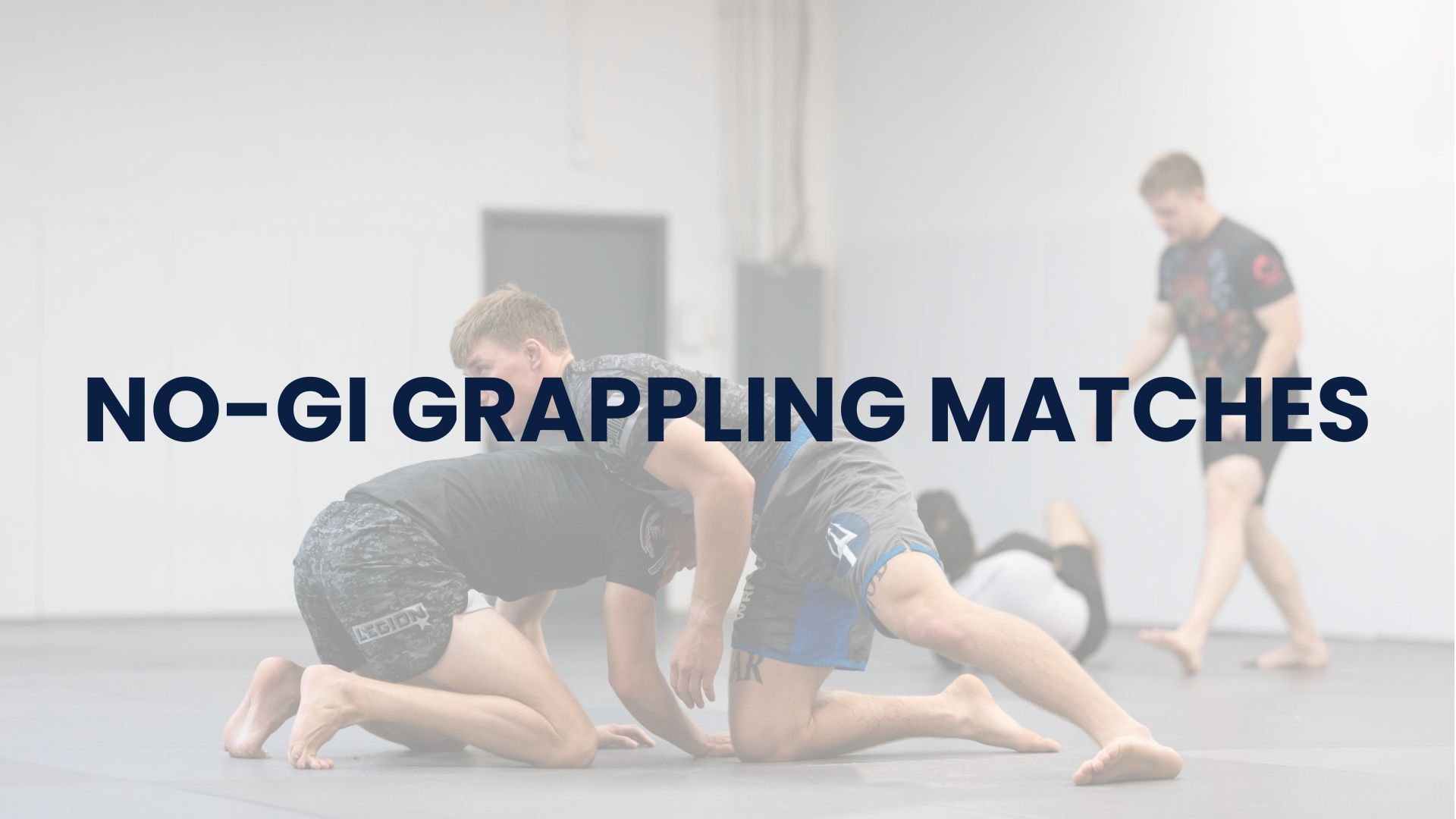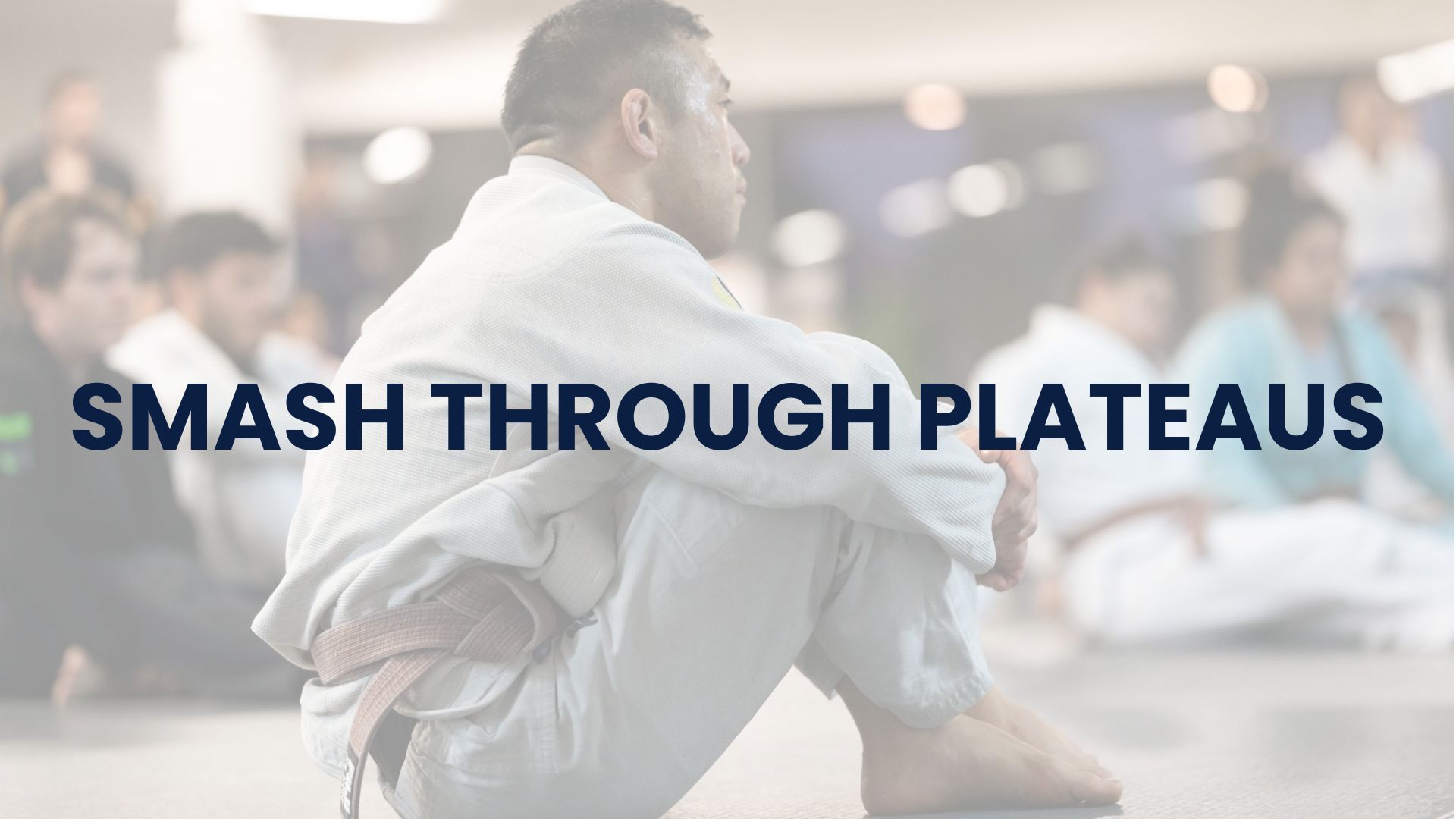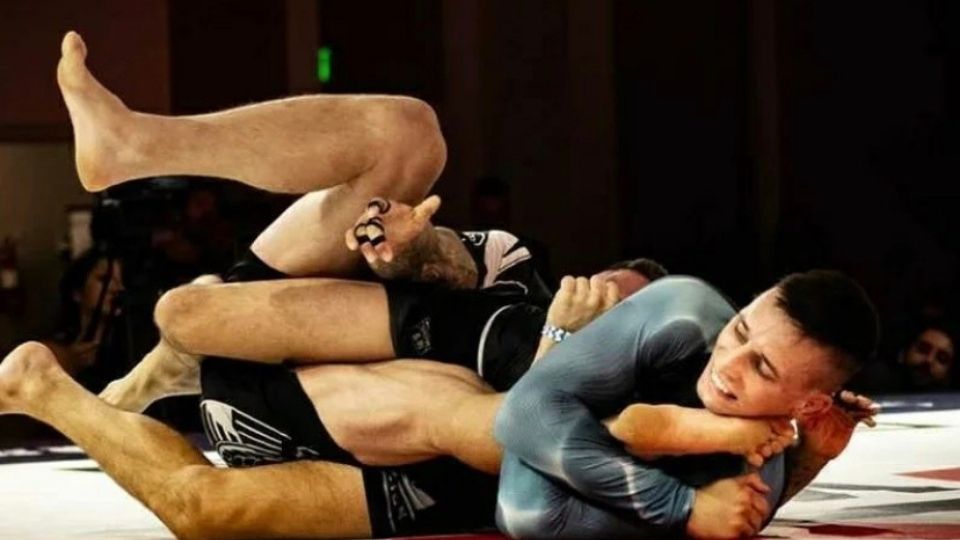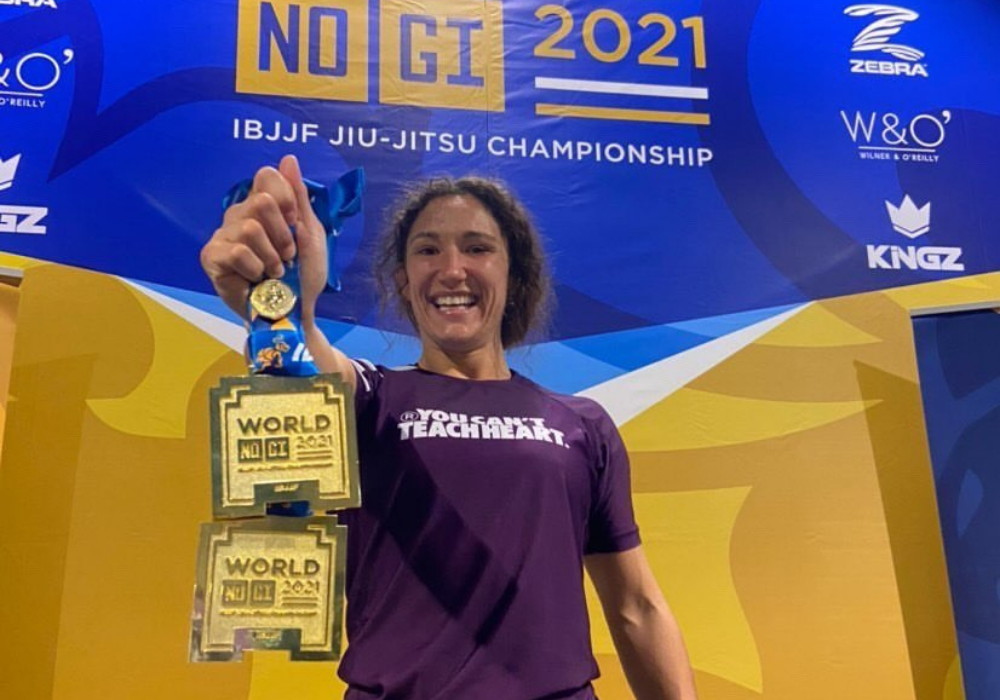Are you feeling at a disadvantage on the mats because of your body type and lack of athletic ability?
Does it ever feel like all your techniques are being overpowered by brute strength and you just can’t figure out why?
As jiu jitsu practitioners, we are in constant pursuit of ways to maximize our jiu jitsu potential.
We read the books, we study the techniques, we understand the philosophy.
And one of the biggest mental roadblocks you must come to terms with on your journey relates to the differences in strength and body type among practitioners…
While technique and leverage serve as the building blocks that make jiu jitsu work, it’s impossible to undermine the role that body type and strength play in performance.
You’ve no doubt found yourself saying…
“I feel like my training partners are stronger than me and my techniques don’t work against them!”
OR perhaps you’ve said something like…
“I feel stronger than everyone I roll with, but I’m tired of being embarrassed by the 16 year blue belt that chokes me out every class.”
Whether you feel it’s technique you’re lacking or that a lack of strength is holding you back, I want you to know that you are definitely not alone.
We all fall into one of these two camps above at some point in our journey.
It’s inevitable.
And trying to avoid feelings like this is kind of like trying to avoid nature itself.
To better understand these feelings, let’s use a hypothetical example:
Joe is a 3rd degree blue belt in jiu jitsu and has been training consistently for several years. Joe weighs around 165 lbs and is in his early 30s.
But one day, a new white belt joins the crew.
Jack is a 230 lb former college football player from Virginia. He has never trained jiu jitsu before.
2 weeks in, he finds himself paired with Joe for sparring.
Joe begins setting up the half guard game he likes to use.
But unfortunately for Joe, strength wins out in this particular round. Jack is able to pass Joe’s guard with a basic knee cut he learned just the week before, leaving Joe trapped in a brutal headlock.

oe goes home that night and fantasizes about being bigger so he can use his techniques on Jack, but he knows this isn’t possible and reality continues to slap him right in the face.
Perhaps you’ve been in a similar situation to Joe, wishing you could be bigger, stronger, more athletic, more flexible, or whatever it may be for you.
But at the end of the day, your body type is your body type…
And you can’t change that.
But what you can change is your ability to use your specific body type to maximize your effectiveness on the mats and your unlimited jiu jitsu potential.
Before we look into the hows of doing that, let’s take a look at two archetypal approaches to jiu jitsu and the arguments for their application.
Argument 1: Technique > Strength
The technique conquers strength creed is prevalent in the jiu jitsu community, and is a big reason why many pick it up in the first place.
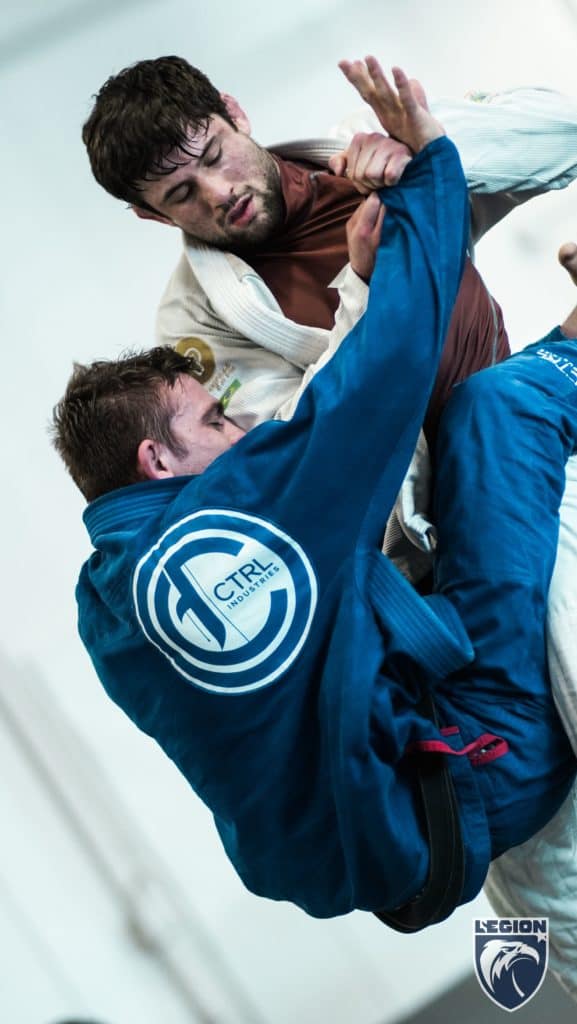
The idea that someone who is smaller, weaker, and slower can out grapple someone much more athletic, using leverage and knowledge of technique, is truly an inspiring staple of jiu jitsu theory.
When Helio Gracie came on the scene as one of the pioneers of Brazilian Jiu Jitsu, one of his biggest selling points was his ability to out grapple much younger, much more athletic opponents with pure knowledge and understanding of leverage and position.
Royce Gracie, the smallest and youngest of the Gracie family, was chosen among his brothers to represent the art of jiu jitsu at the inaugural UFC event on the 12th of November, 1993.
He showed the world that through the art of jiu jitsu, a much smaller opponent can in fact out grapple a bigger opponent by defeating Dutch striker Gerard Gordeau, Boxer Art Jimmerson and Wrestler and early MMA pioneer Ken Shamrock to become the very first UFC champion.
The most notable thing about Royce’s performance at UFC 1, and the four events that followed, was that many of his wins were against opponent’s who were much larger and, according to the then conventional wisdom, more physically gifted than he was.
And Royce isn’t an outlier. There are many more recorded instances where technique has conquered strength in combat sports.
Here’s a video of Rener Gracie displaying this in a sparring bout with a 275 lbs NFL player
Ok, so we’ve made the case for technique over strength…
But what about the other side of the coin?
Argument 2: Strength > Technique
Jiu Jitsu prides itself on the promise that with enough technical knowledge, your opponent’s size will never be an obstacle
However, results from major tournaments show that this isn’t always the case.
Take a look at the winners of the Absolute Division of the IBJJF World Championships over the last nine years and their natural weight divisions
2010 Gold Medalist: Roger Gracie (ultra heavyweight)
2011 Gold Medalist: Rodolfo Viera (ultra heavyweight)
2012, 2013, 2014 Gold Medalist: Buchecha (ultra heavyweight)
2015 Gold Medalist: Bernardo Faria (super heavyweight)
2016, 2017 Gold Medalist: Buchecha (ultra heavyweight)
2018 Gold Medalist: Leandro Lo (heavyweight)
2019 Gold Medalist: Buchecha (ultra heavyweight)
Notice a trend here?
From the results above, it’s clear to see that the winners of the absolute division for the biggest tournament of the year have all been heavier than the middle heavyweight division (200 lbs plus).
Buchecha, who has won the absolute division 6 times, is not only technical, but also sits well above 230 lbs.
Roger Gracie, one of the greatest of all time, and a 10 time World Champion, is an ultra heavyweight.
So, what happened to the notion of “technique conquers all?”
Perhaps there’s something to be said about the benefits of strength in jiu jitsu (especially in competition).
So, what is the truth?
Does strength beat technique, or does technique beat strength?
I wish I could tell you there was an easy answer to this question.
But the cold hard truth is…
It’s both…
And more importantly…
It entirely depends on you.
The debate of technique vs strength has raged since the dawn of combat sports…
… and it ain’t going away anytime soon.
So instead of worrying about which argument is true, a more valuable pursuit would be to look into what is true for YOU…
… and how YOU can leverage it to your advantage
Whether you’re a 275 lbs blue belt…
Or a 115 lbs brown belt…
You can adapt your knowledge of your body type for jiu jitsu and make it work for you.
HERE’S HOW…
How To Adapt Your Jiu Jitsu Game To Your Body Type
Whether you fall into the category of “too strong” or “not strong enough,” jiu jitsu can be made to suit .
Let’s dive into 4 ways you can start the process of developing a game for your body type.
#1: Want the key to success? Model the best!
One of the coolest things about jiu jitsu is there has been a wide variety of people who have been successful, which means everyone has the potential to get good at it.
This variety also means that it won’t be too difficult to find, learn from, and emulate the games of successful athletes who share your body type.
You’re long and lanky? Watch Keenan Cornelius tie people up.
You’re a 300 lbs former linebacker? Indulge in some Buchecha or Bernardo Faria.
You’re a rooster weight? Check out Mikey Musumeci fighting in the absolute divisions.
Point being, for every body type there is someone in the jiu jitsu world who has made that body type work for them…
… which means it can also work for you.
When watching these athletes, try to figure out what it is about their body composition that aids them in their style of jiu jitsu.
Take this image below…
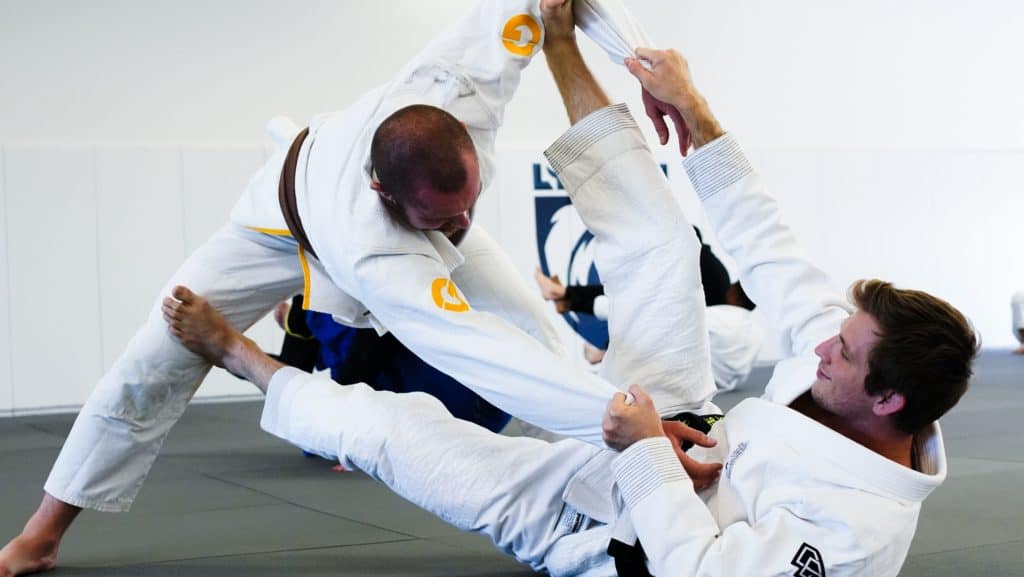
For all the long and lanky people out there, what do you notice about the way Keenan is playing guard?
Note how Keenan is using his right leg to control the distance of his opponent and setting up what looks like to be a modified scissor sweep.
Also, note how stretched out his opponent is.
As you can see in this scenario, Keenan is truly using his body type to his advantage.
His long legs facilitate a very strong open guard game, and he knows this.
Very rarely do you see Keenan using guards like half guard, deep half, or even closed guard.
Does this mean that these types of guards don’t work? Or that he doesn’t ever use them?
Of course not.
But for Keenan’s specific body composition, he has found what works best for him.
Keep in mind that watching an athlete similar to you is not the magic pill that will make your jiu jitsu better overnight.
You’re still going to have to put in the time to figure out the unique quirks and nuances for your own game.
But watching those who are similar to you will definitely start you in the right direction.
#2: Hash out your jiu jitsu struggles on paper, and discover useful techniques while you’re at it.
This is a big one…
So big that we’ve laid out a method for you to create a personalized jiu jitsu acceleration plan to increase your overall skill on the mats, and track your progress in a very beneficial way.
And the secret advantage to this strategy is the fact that very few people are willing to do it.
After finishing a training session, write down every sweep, pass, submission, escape, and anything else you made work that day
And on the flip side…
Write down every technique that worked against you that day.
Once this is written out, go through each technique and try to figure out what the exact reason was for the success of that technique.
While doing this, note the size difference between you and the partner for each particular technique (or vice versa if they performed the technique on you).
For example:
I swept Jimmy with a scissor sweep today.
Jimmy weighs around 150 lbs and I weigh 140.
I also hit the same sweep on Bob, who weighs around 220 lbs.
I notice that I’m able to kick the knee out with much success, due to my ability to get extension with my long legs.
However, when I attempt this technique on Frederick (200 lbs lanky guy), it doesn’t work as well because he’s able to base out better with his leg.
Here’s another example:
I passed Frank’s guard with a knee slide pass from half guard today.
Frank weighs about 165 lbs and is incredibly fast; I weigh 250 lbs.
When I am able to get to my pressure passing positions on top, I feel confident I am going to pass.
However, when Frank gets on top, his movement is so fast that I’m not able to make my open guard work. Every attempt I make to recover he slips right around my guard.
Perhaps next time I roll with Frank, I’ll try utilizing more of a half guard game to force him to slow down.
By doing this exercise often, you will slowly begin to unveil the techniques that work best against specific body types.
You’ll begin to understand what type of passer you are.
Same goes for your guard game…
And your defense…
And the submissions in your arsenal.
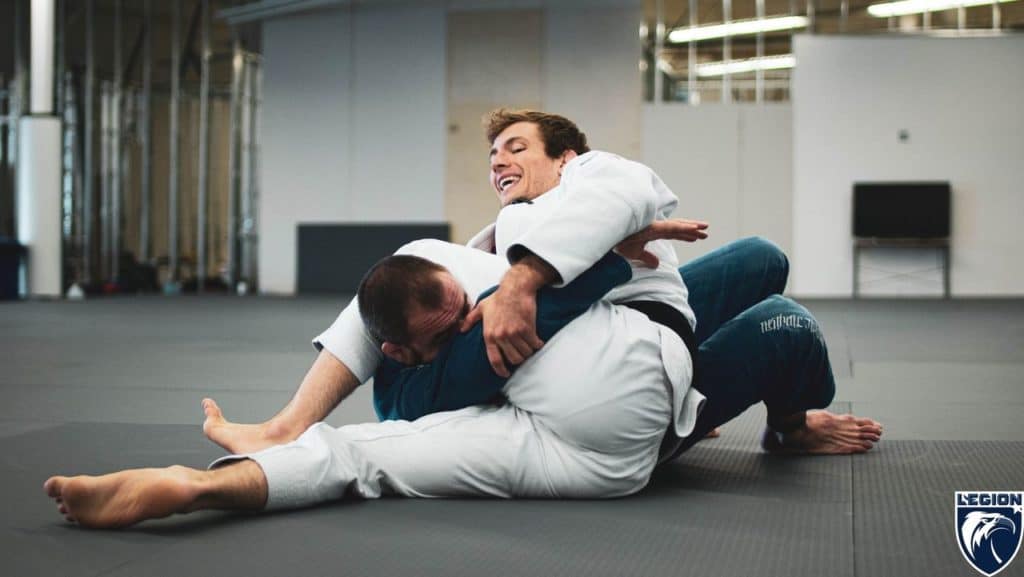
For all the long and lanky people out there, what do you notice about the way Keenan is playing guard?
Note how Keenan is using his right leg to control the distance of his opponent and setting up what looks like to be a modified scissor sweep.
Also, note how stretched out his opponent is.
As you can see in this scenario, Keenan is truly using his body type to his advantage.
His long legs facilitate a very strong open guard game, and he knows this.
Very rarely do you see Keenan using guards like half guard, deep half, or even closed guard.
Does this mean that these types of guards don’t work? Or that he doesn’t ever use them?
Of course not.
But for Keenan’s specific body composition, he has found what works best for him.
Keep in mind that watching an athlete similar to you is not the magic pill that will make your jiu jitsu better overnight.
You’re still going to have to put in the time to figure out the unique quirks and nuances for your own game.
But watching those who are similar to you will definitely start you in the right direction.
#2: Hash out your jiu jitsu struggles on paper, and discover useful techniques while you’re at it.
This is a big one…
So big that we’ve laid out a method for you to create a personalized jiu jitsu acceleration plan to increase your overall skill on the mats, and track your progress in a very beneficial way.
And the secret advantage to this strategy is the fact that very few people are willing to do it.
After finishing a training session, write down every sweep, pass, submission, escape, and anything else you made work that day
And on the flip side…
Write down every technique that worked against you that day.
Once this is written out, go through each technique and try to figure out what the exact reason was for the success of that technique.
While doing this, note the size difference between you and the partner for each particular technique (or vice versa if they performed the technique on you).
For example:
I swept Jimmy with a scissor sweep today.
Jimmy weighs around 150 lbs and I weigh 140.
I also hit the same sweep on Bob, who weighs around 220 lbs.
I notice that I’m able to kick the knee out with much success, due to my ability to get extension with my long legs.
However, when I attempt this technique on Frederick (200 lbs lanky guy), it doesn’t work as well because he’s able to base out better with his leg.
Here’s another example:
I passed Frank’s guard with a knee slide pass from half guard today.
Frank weighs about 165 lbs and is incredibly fast; I weigh 250 lbs.
When I am able to get to my pressure passing positions on top, I feel confident I am going to pass.
However, when Frank gets on top, his movement is so fast that I’m not able to make my open guard work. Every attempt I make to recover he slips right around my guard.
Perhaps next time I roll with Frank, I’ll try utilizing more of a half guard game to force him to slow down.
By doing this exercise often, you will slowly begin to unveil the techniques that work best against specific body types.
You’ll begin to understand what type of passer you are.
Same goes for your guard game…
And your defense…
And the submissions in your arsenal.
#4: Harness the power of “jiu jitsu” strength and learn to apply superhuman pressure.
There’s a commonly misunderstood idea that strength in jiu jitsu is one dimensional.
That you’re either strong…
or you’re not.
However, it’s slightly more complicated than that
Because, believe it or not, strength in jiu jitsu is multidimensional.
Here are a couple ways to define it.
Traditional strength: the amount of force or pressure one can inflict or withstand.
And JIU JITSU STRENGTH: the ability to apply pressure in targeted areas to achieve maximum control.
Have you ever rolled with someone smaller than you who felt like they were 400 lbs?
That’s jiu jitsu strength.
Developing this jiu jitsu strength has little to do with how heavy or traditionally strong you are, and more to do with your development through the constant refining of techniques.
The more you study and understand how to apply techniques in the correct way, the “stronger” you will feel on the mat.
This is the type of strength we want to strive for because anyone can achieve it.
To gauge your “jiu jitsu” strength, try your best when rolling to notice where you’re focusing your weight.
Is it randomly spread out across your partner’s body?
Or is it specifically targeted in areas that are beneficial to keeping your opponent controlled?
Awareness of this idea is incredibly enlightening because it unveils a part of the secret sauce that elite black belts understand.
The best black belts in the world are not the strongest black belts in the world.
But…
They have developed their jiu jitsu strength through the constant refining of positions and a complete understanding of leverageable control points.
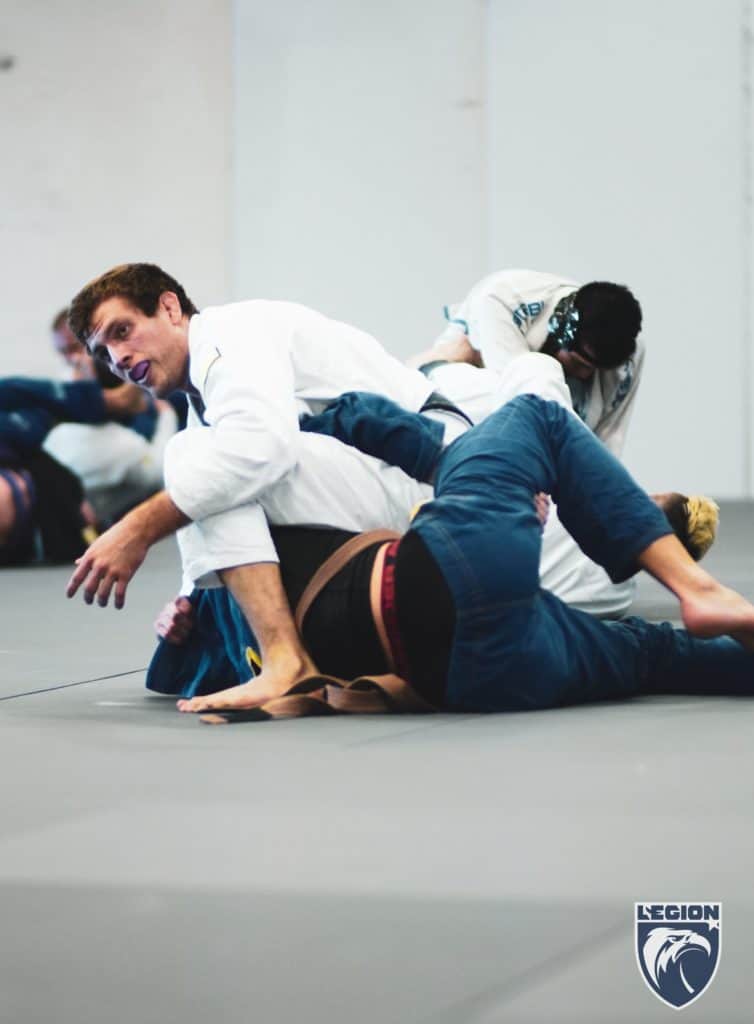
Closing Thought: Lack of Strength Is Not Holding You Back
Many practitioners of the gentle art feel that strength is keeping them from getting to the next level.
But I’m here to assure you that regardless of size, coordination, age, or strength…
There is someone out there who has made waves in the sport with your exact body composition.
How? You may ask
A keen ability to study.
Attention to detail
Looking for what fits into their strengths as opposed to forcing what doesn’t.
Yes, it takes work.
But it’s most definitely possible for you with the aid of these four principles.
You have the resources at your feet.
It’s time to apply them to reach your full potential and leave your training partners in awe of your epic transformation on the mats.
